ROG gets fit and stays fit with VR gaming
by Jeff Kampman and Geoff Gasior
Many of us have probably resolved to go to the gym, start a Couch to 5K program, or dust off that bike in the corner of the garage at some point. More often than not, those resolutions end in a half-hearted effort if they get started at all. Getting fit or staying fit is hard work, and starting from square one can seem like staring up at a sheer rock wall. That’s before we consider the expensive gym membership or specialized equipment that can be necessary to get up and running, too. Even if you want to introduce variety into an established fitness routine, taking up a new discipline that you’re unsure about could be a costly and ultimately unfulfilling detour.
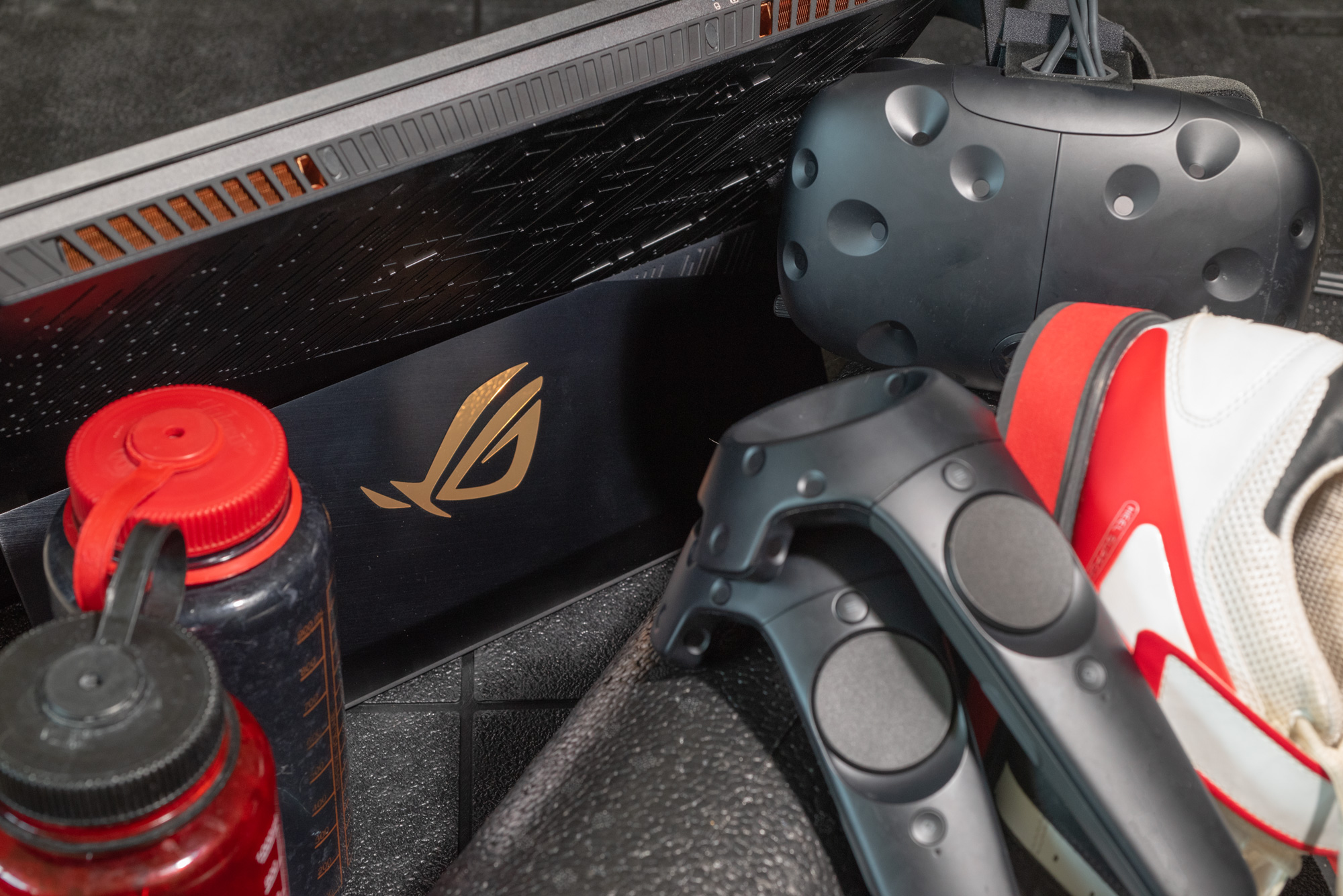
If you’re a PC gamer and own a VR headset, it turns out that an easier path to fitness or workout variety may be right in front of you. VR has opened up whole new worlds for game developers to explore, and it’s been especially interesting to watch developers make games that get you up and active, whether through music games where you move to the beat or in sports titles that realistically simulate the challenges of disciplines like boxing. Even VR games that aren’t specifically designed with fitness in mind can still require you to contort yourself in ways that are more challenging than just sitting in a chair and mashing the WASD keys.
To explore the possibilities afforded by VR fitness, I teamed up with my colleague Geoff to play some classic and cutting-edge titles to see what they did to raise our heart rates and fatigue our muscles. We’ll be tag-teaming throughout this article to offer our impressions. Where only one of us played a game, we’ll note it accordingly.
Jeff’s fitness background
As a lapsed weightlifter whose attention has increasingly turned to cardio workouts as a way to keep my heart healthy and the numbers on the scale in check, I've really come to enjoy gaming with a fitness component. I’ve tried to take up running, for example, but even when I get through a run, I’ve frankly hated every minute of having to put one foot in front of the other. Some may be born to run, but I'm just not.
Fitness games, on the other hand, put a pre-defined goal in front of me, and being able to work toward that established goal with immediate feedback on the result really takes my mind off the necessary exertion. The game itself provides the motivation, and I just have to keep up. Best of all, I can sweat it out in my own home without any fear of judgment and with the AC or heat running at just the right temperature, whether it’s raining or shining outside. That consistency, privacy, and convenience makes it a lot easier to stick with a routine.
I’ve already returned to my fitness-game roots with Dance Dance Revolution and Stepmania, two four-panel dance games that can get incredibly complex and intense. Many years ago, I spent my summer days at a local arcade feeding tokens into a well-loved Dance Dance Revolution Extreme cabinet, so it's been really fun and fulfilling to get a hard pad of my own for the home. Even with thousands of Stepmania charts at my disposal, I wanted to get some variety into my fitness gaming routine, so VR was a natural choice.
Geoff’s fitness background
My fitness background is fairly different from Jeff’s, despite the fact that we share similar names. I’ve been an endurance athlete since high school, and apart from a few brief lapses due to injuries and fatherhood, I’ve been training consistently for close to 30 years. These days, my usual routine mixes long-distance running and cycling with workouts in my garage, which is loaded with kettlebells, a chin-up bar, and a heavy boxing bag.
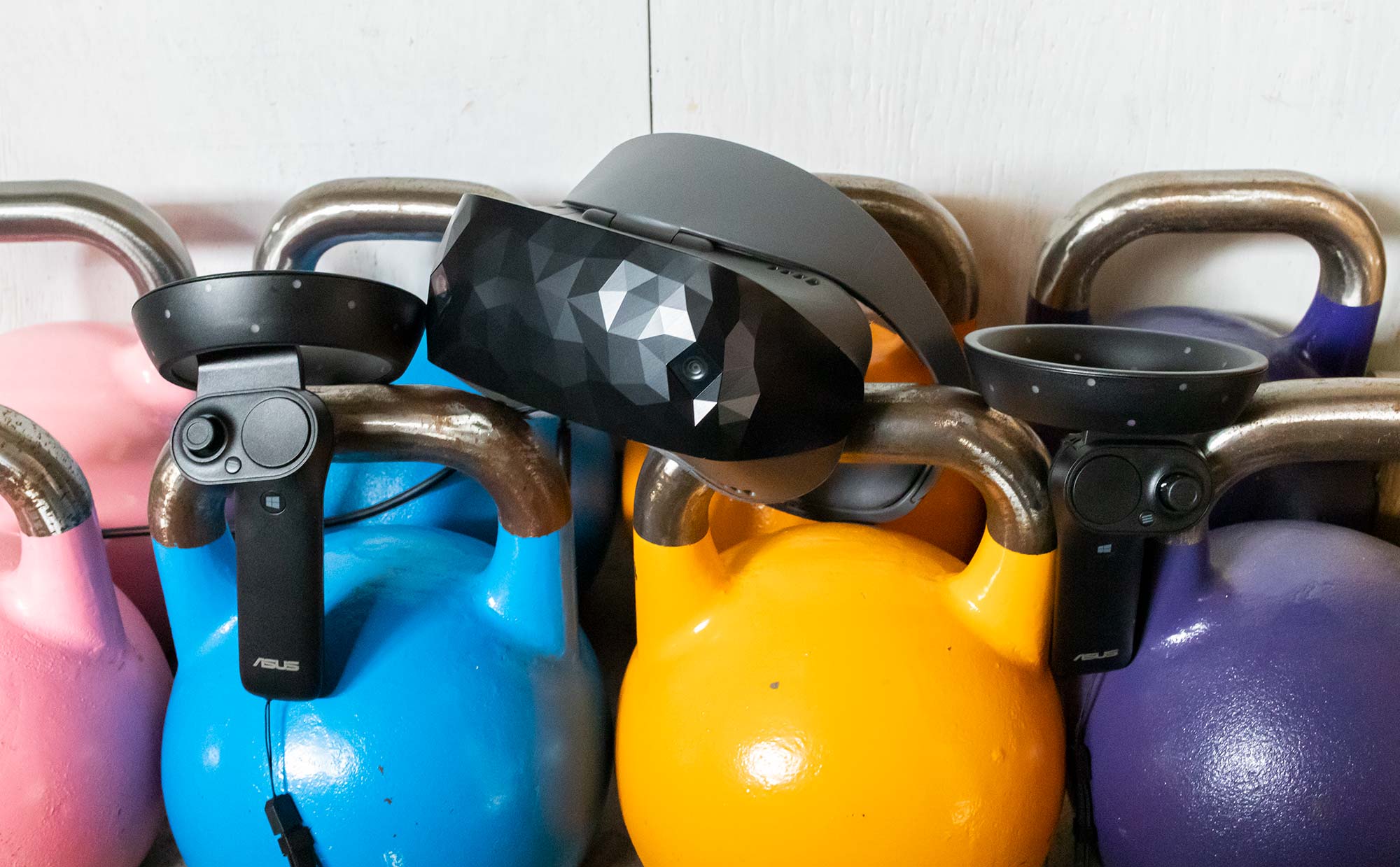
Motivation has never really been a problem for me. Maybe I’ve become addicted to the cocktail of dopamine and lactic acid that my body produces, because I genuinely look forward to pushing its limits. Much of my day is also spent sedentary sitting in front of a screen, making exercise a welcome escape and opportunity to move. Trouble is, weather and daylight aren’t always conducive to venturing outdoors, and being cooped up in my garage gets kind of old. VR offers a tantalizing alternative that engages my body while taking my mind somewhere else entirely.
Ever since Beat Saber opened my eyes to the potential of exercising in virtual reality, I’ve been experimenting with different games and mixing them into my routine. They’ve been especially helpful during the winter months, when I tend to do more of my workouts indoors, and am hungrier for changes in scenery. By choosing games carefully and being mindful about how I play them, it’s easy to tailor a workout to be more or less intense, and focus on specifics like cardio or core strength.
Beat Saber
Jeff’s take
Thanks to my enthusiasm for DDR and Stepmania, I was particularly interested in what Beat Saber had to offer for VR fitness fanatics. I’d played it on friends’ PCs and VR systems before, but I’d never gotten around to grabbing a copy for myself. Slashing through blocks set in time to music is a natural extension of the rhythm game formula I love, but I’d never formally thought about the kinds of motion and exertion that the game required.
After finally picking up Beat Saber for myself and cutting thousands of blocks to shreds, I can attest that it’ll take a lot of skill and practice to play this game at higher levels. That said, the motions involved seem to require more fine motor control with the forearms and wrists than they do compound movements with larger muscle groups. It’s possible to use more compound motions like squats to accomplish certain types of slashes, but I found that I had to make a strong, conscious effort to incorporate those kinds of movements into songs.
Don’t get me wrong here—Beat Saber is a ton of fun in a well-executed package. I’ve played certain songs to the point of obsession so that I could finally feel the satisfaction of accurately slashing my way through troublesome sequences of blocks. It’s certainly more active and involving than seated gameplay. Even though I sweated (and yelled) plenty during those hours of gameplay, my fitness tracker didn’t indicate that my heart rate was getting much beyond that of a brisk walk. I’ll definitely return to Beat Saber for the fun of it, but for a workout proper, I need more whole-body intensity from my VR games.
Geoff’s take
Beat Saber is a great example of how play style affects workout intensity. The blocks offer no resistance, so you can slice through them with little more than the flick of a wrist. Scoring is based primarily on the precision of your strikes and where they land in your swing, along with a multiplier tied to the number of consecutive hits. There’s no reward for hitting with more speed or swinging a wider arc, and doing so actually works against you at higher difficulties, where the barrage of incoming blocks requires short and efficient movements to keep up.
When the game was first announced, I immediately imagined myself slashing through songs like a futuristic ninja. Beat Saber delivers that experience in a visceral way, but only when I’m really into it, swinging with purpose and aggression that engages my entire body. The spectacle looks a bit ridiculous to observers. Imagine the Star Wars Kid with much more intensity. It’s still enough to keep my heart rate around 150 BPM, which is similar to what I get during an easy run on flat terrain. A typical workout comprises roughly an hour of continuous play, with only occasional breaks between songs to hydrate. It leaves my arms and shoulders satisfyingly sore the next day, but the game’s squats and side-to-side movements are too few and far between to really tax my lower body. This is a good option if you want to skip leg day.
Jeff takes an Audio Trip
As I was searching out more titles to get my heart pumping, I came across Audio Trip, a relatively new game by developer Kinemotik Studios. It’s still in Early Access on Steam, but even in the short time I’ve had to get familiar with it, it’s become one of my favorite VR fitness escapes.
Audio Trip puts you on a sled that rockets through abstract environments while music plays, and you need to swing your arms wide, jump from side to side, and drop low to the floor so that your hands can hit sequences of discrete triangles, continuous tubes, and pound-able drums suspended in 3D space. On top of keeping up with those sequences, virtual barriers across part of the sled’s path force you to dodge with real jumps or squats in order to avoid penalties. That intensity translates to a fairly high heart rate. I observed an average of 117 BPM with frequent peaks of 147 BPM during my “trips.”
The best part of Audio Trip for me is its sophisticated choreography. One of the game’s developers is a professional dancer, and it really shows. Even on its beginner difficulty, Audio Trip involves your whole body in its gameplay. It’s impossible to stay still when you’re grooving out to major-label tracks from the likes of Zedd, Lady Gaga, and deadmau5, but Audio Trip takes this natural instinct to move and amps it up with plenty of variety in the sequencing and positioning of polygons that it makes you hit.
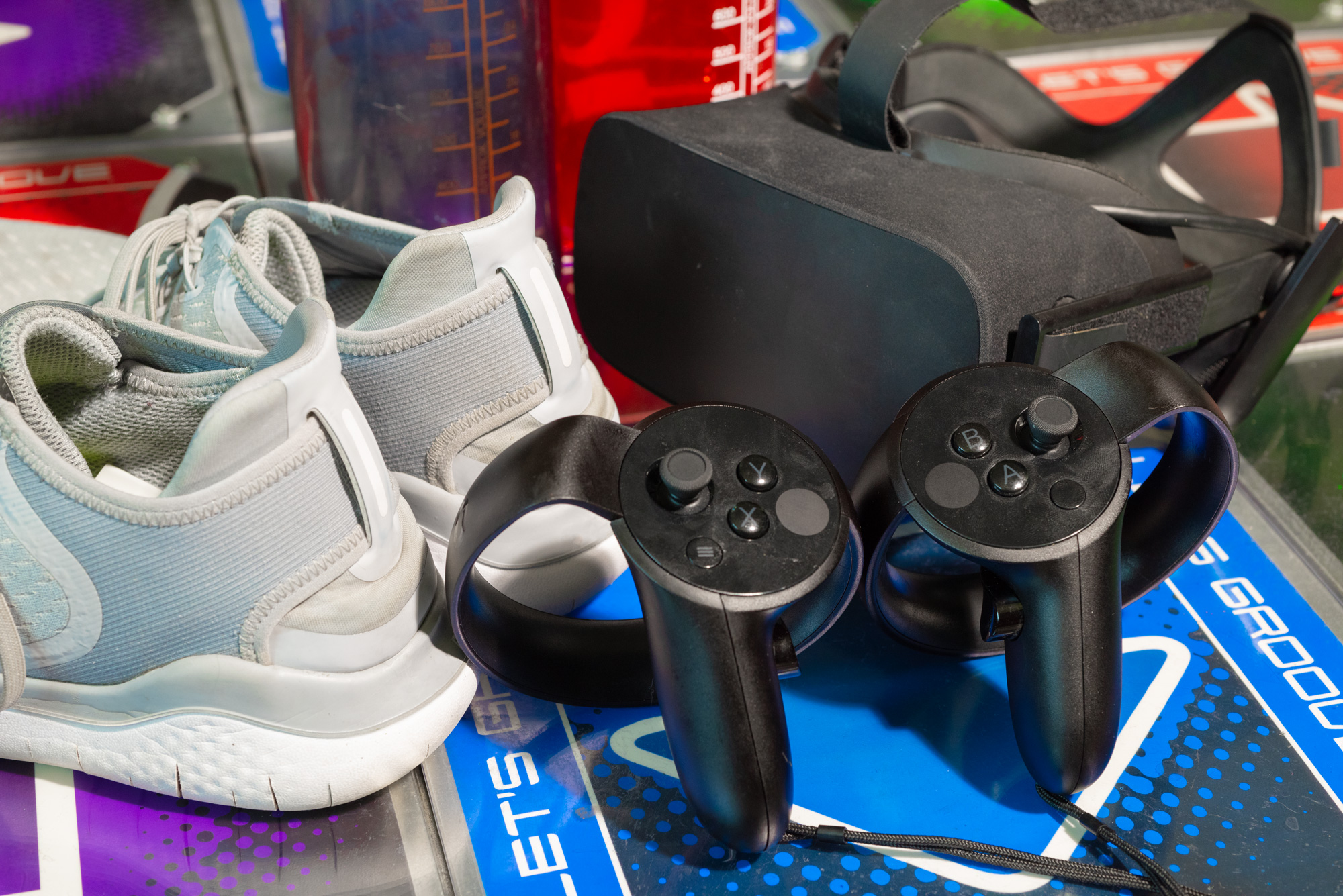
For reference, Dance Dance Revolution and Stepmania restrict you to stomping on four different arrows—up, down, left, and right—when you play on a dance pad, and those restrictive movements never really feel like dancing even when your feet are flying through complex step charts. Audio Trip can take full advantage of 3D space to define your movements, so you might have to quickly stand up and duck down to hit sets of discrete triangles while tightening your core to curve your arms smoothly through twisting, turning tubes of color in another part of the song.
When I started to put all those motions together, I began to feel like a professional back-up dancer for the artist I was listening to, and that turns out to be a really addictive feeling. As I gathered impressions for this article, “quick” Audio Trip sessions turned into hour-long sweatfests that felt far shorter than they were in reality. That’s a promising sign for any form of exercise, let alone a VR fitness title.
You’ll also find yourself trying new moves in the heat of the moment to get your hands in position. During one of the songs I played, a sequence of alternating triangles and barriers came up that made me instinctively punch across my body to hit each one, and it worked great. After pushing myself through that sequence, I wasn’t just breathing hard—I felt brilliant. That’s another mark of a fitness game you can come back to over and over again.
Geoff pursues isometric precision in Superhot VR
Not every workout needs to elevate your heart rate. Superhot VR is a perfect example of how a game can build strength and mobility without heavy breathing. The unique shooter has a simple premise that sets the tone: time stands still as long as you do. It advances only when you’re in motion, creating a unique experience that melds more conventional melee and gunplay with slow-motion strategy. Carefully controlling and executing movements lets you artfully dispense a stream of enemies while dodging gunfire and even picking bullets out of mid-air.
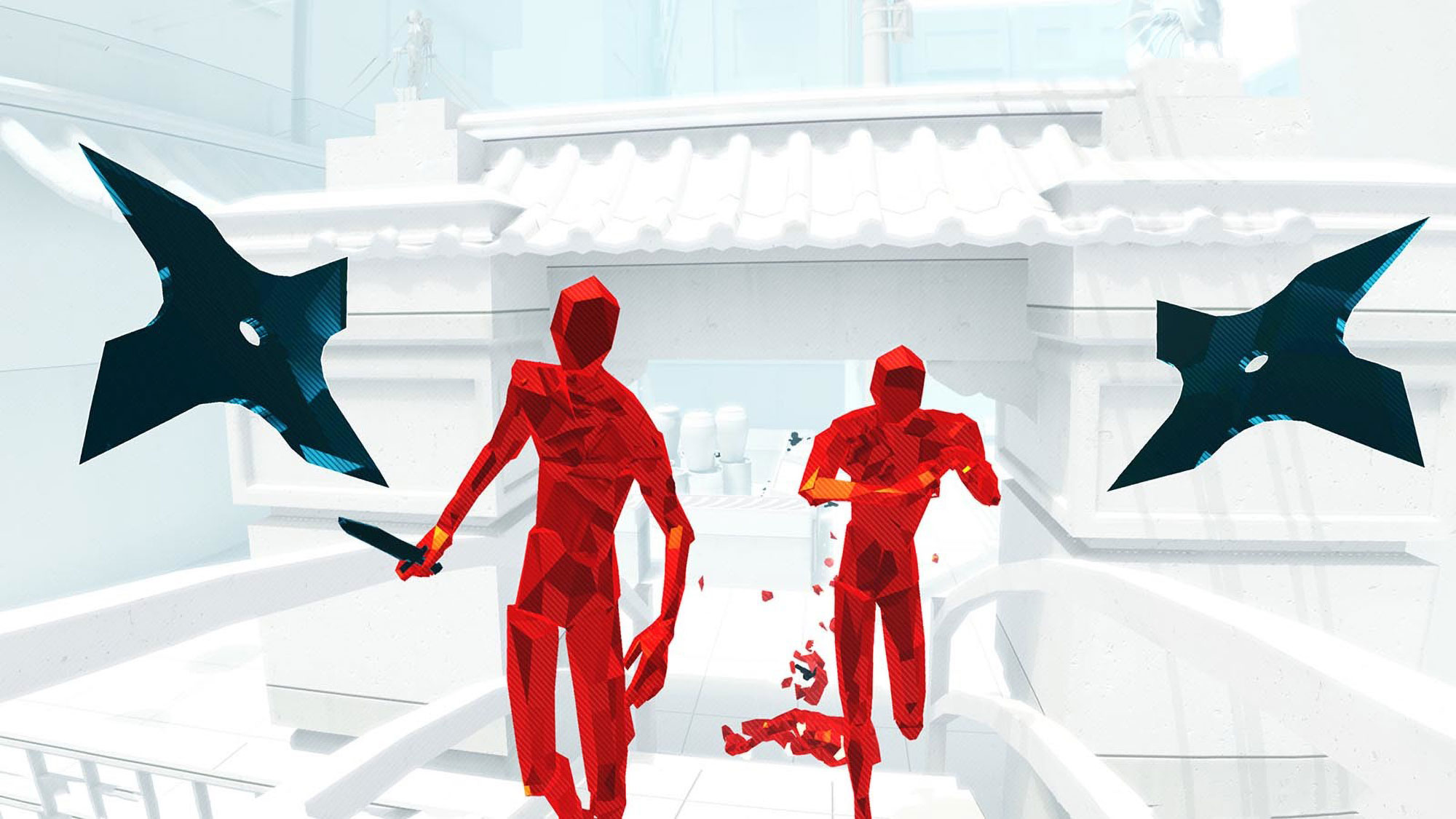
Image courtesy Gamesplanet
The gameplay feels like a John Woo movie choreographed by a master of Tai Chi. Your position is largely fixed, so grabbing weapons and getting out of the way of incoming fire requires contorting your body into positions that activate lots of different muscle groups. While playing, I concentrate on contracting my core to maintain stability, and try to string together smooth movements in a slow, continuous flow of stylized violence. This doesn’t get me anywhere near aerobic territory, but after an hour of two, I can definitely feel the effects the next day. Superhot VR leaves me with faint, full-body soreness that feels athletically productive without being overly strenuous.
One of the things I’ve learned over decades of training is that building strength in core and smaller muscles is vital to avoiding injury and maintaining long-term activity. The workouts that best activate those areas are often boring, but Superhot VR provides a much more enjoyable alternative that at least feels like it has similar benefits. The impact can be relatively low, making it easy to pick up and play, or use as a warm-up before something more intense.
Stepping into the ring in The Thrill of the Fight
Jeff’s take
Where Beat Saber and Audio Trip dropped me into surreal environments set to music, The Thrill of the Fight takes the storied sport of boxing out of the ring and into the VR headset in a startlingly realistic way. When I first fired this game up, it struck me as sparse, but it’s not at all simplistic. At least with my untrained hands holding the controllers, it captures an incredible sense of what it’s like to train, spar, and compete in the ring. It also forced me to develop force, speed, and explosiveness in my virtual punches in a way that quickly led to sore arms and shoulders.
The Thrill of the Fight makes no bones about being a simulation, so it’s perhaps unsurprising that there is no formal tutorial. Instead, the game gives you access to a variety of bags and dummies that you can use to develop your skills. I set up shop with a body opponent bag and quickly learned that I had a lot to learn.
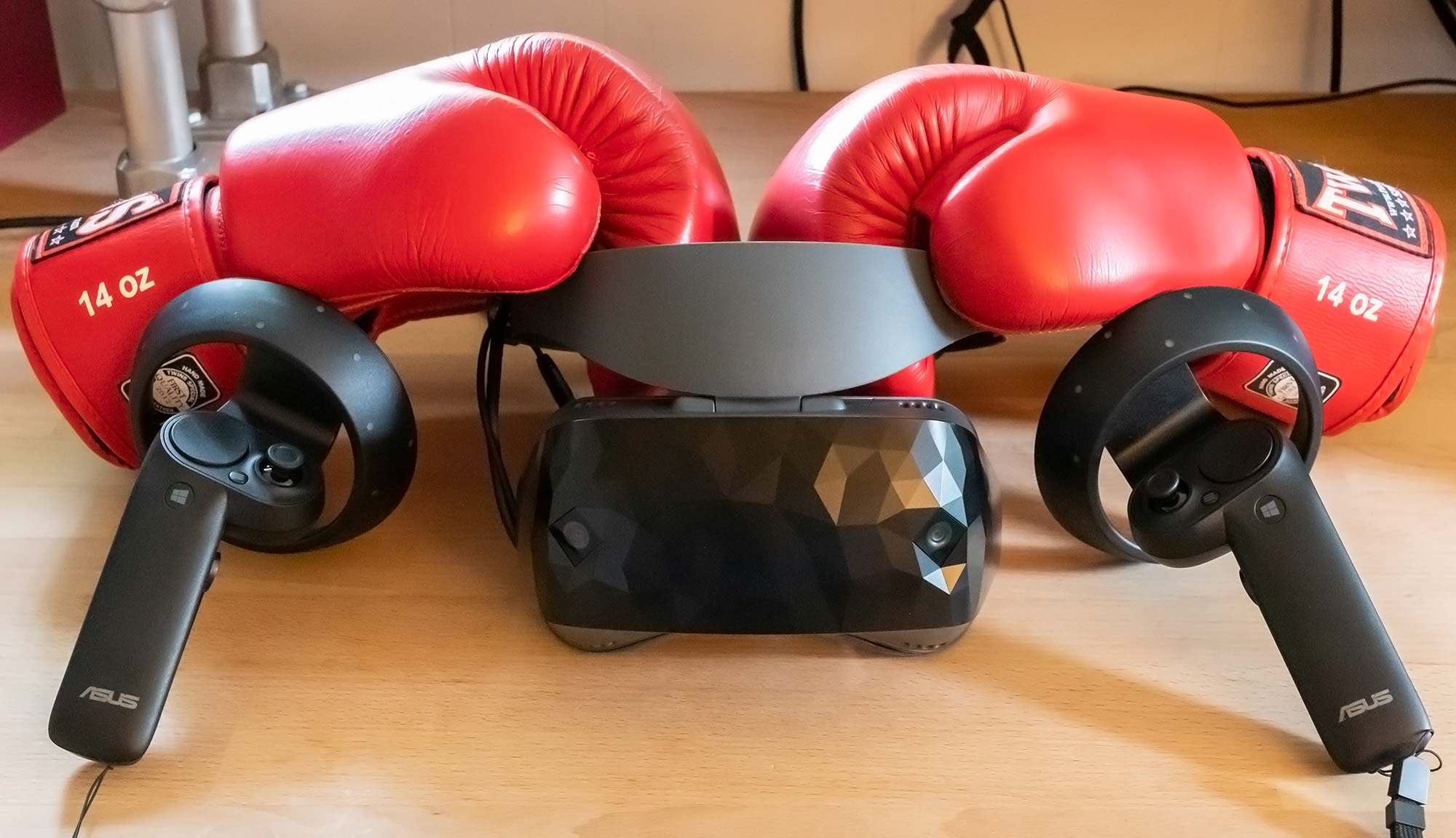
The detailed feedback the game offers on hand speed and force at least let me know what motions weren’t working well as I tried to beat up on the dummy, and improving those figures turned out to be a surprisingly difficult experimental process. After just a few minutes with the dummy, I was grunting and breathing heavily as I tried to score both harder and more accurate hits on the helpfully-highlighted jaw, torso, and temples of my “opponent.”
After developing a rudimentary sense of how to punch, it was time to step into the ring. I first ran through a round with a sparring partner, where I developed perhaps an inflated sense of my skills. In my first actual match with a proper opponent, I got roundly clobbered. Even though I wasn’t displaying much in the way of technical excellence, I was getting a surprisingly intense workout as I tried to get some punches in. My upper arms and shoulders, in particular, were on fire when I finally decided to throw in the towel, and my fitness tracker showed peak heart rates at least as high as those I had attained during Audio Trip—and all that happened in just under half an hour of gameplay. For explosive intensity, The Thrill of the Fight might be hard to beat.
Geoff’s take
My boxing background is limited to a couple of private lessons with a friend who runs a gym, followed by several years of drilling basic punches and combos by hitting a heavy bag in my garage. While I’ve never sparred a real opponent, I at least have a vague sense of what I’m doing. That was probably my downfall. The first time I played The Thrill of the Fight, I jumped right into a series of escalating fights that resulted in the most intense VR workout I’ve had to date—and the most painful aftermath. Just 20 minutes into the session, I actually had to stop playing briefly to wipe sweat off the floor. That’s never happened to me in VR before.
Without real contact, the experience feels a little like shadow boxing. But what it lacks in impact it definitely makes up in intensity. Nothing motivates movement quite like an advancing opponent swinging at your head. My response in that situation is apparently to channel Nick Diaz in his prime, throwing a high volume of punches that mix softer and harder shots as opportunities and targets arise. During my first hour with the game, I averaged over a hundred strikes per round, and went undefeated through several bouts, culminating in a unanimous draw that left me gasping for air and barely able to stand. My heart rate averaged over 150 BPM for the entire workout and was closer to 170 BPM during rounds. I don’t have equivalent data for real boxing, since my wrist-mounted monitor doesn’t play well with hand wraps and gloves, but that heart rate is similar to what I see during a hard, hilly run at racing speed.
How I feel the day after is generally a pretty good gauge of a workout. The Thrill of the Fight left much of my body stiff and sore, from my arms through my core and into my legs. I also felt generally spent, similar to the fatigue from my most intense cardio workouts. This is by far the most complete exercise I’ve had in games and VR, and easily rivals what I can accomplish in the real world. It’s also one of the most fun and engaging virtual reality experiences I’ve had to date. The fact that I need to carefully pace myself rather than consciously pushing harder is a testament to how well the mechanics of the game invoke natural athletic exertion.
Get up and move
Whether you want light activity or maximum intensity, there's most likely a creative VR developer out there that has crafted an experience tailored to your fitness goals. ROG systems and components are the perfect foundation for powering the PC-connected VR headsets you'll often need to take advantage of these experiences. Whether you need a new gaming desktop or laptop or a powerful new graphics card to step into VR fitness, we've got everything you need to get your heart pumping.


